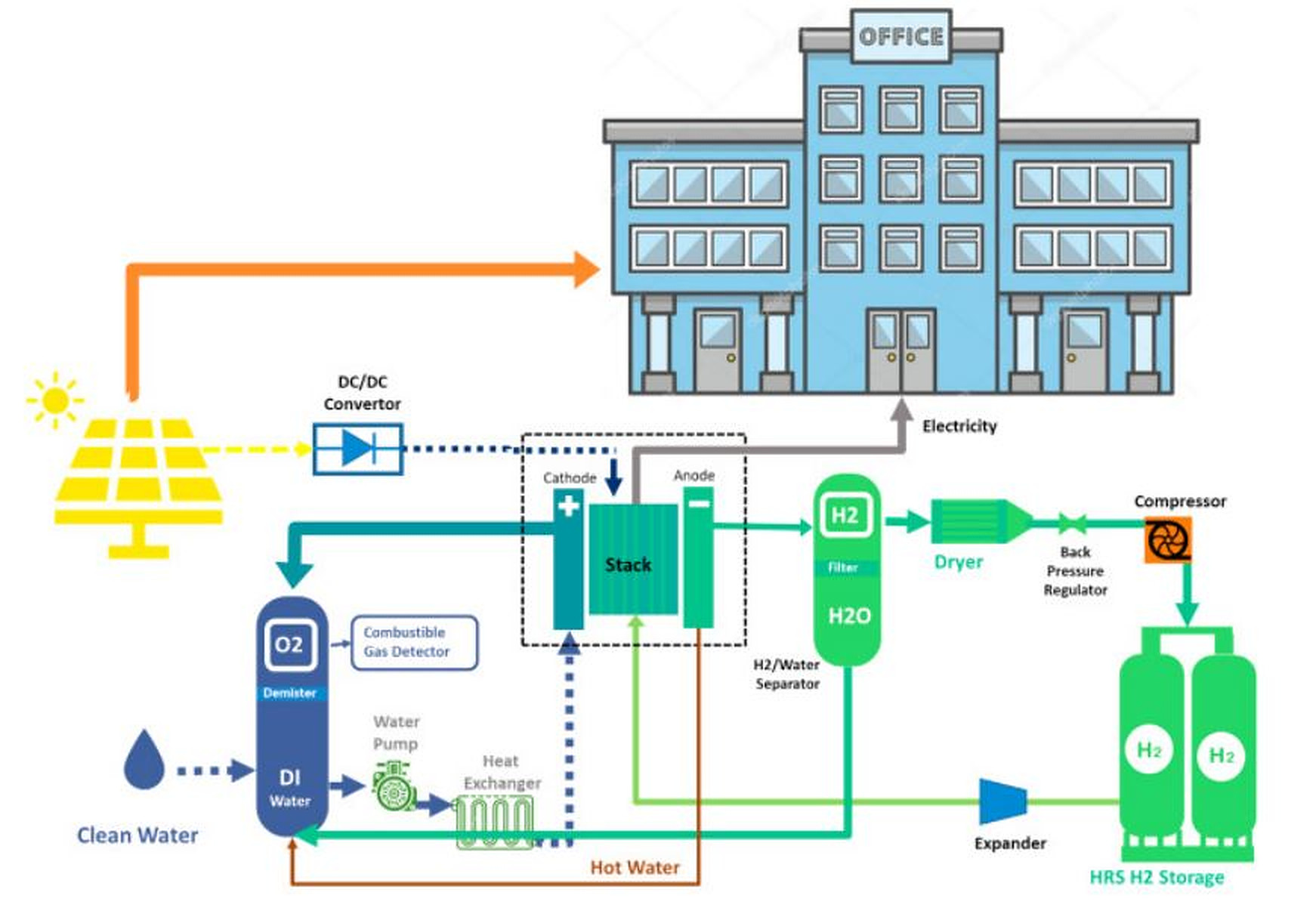
A team of researchers from Khalifa University has developed a techno-economic model to evaluate and compare energy-storage systems (ESS) in green building design.
Dr. Ahmad Mayyas, Assistant Professor, Assia Chadly, MSc student, Dr. Elie Azar, Associate Professor, and Dr. Maher Maalouf, Associate Professor, all from the Khalifa University Department of Industrial and Systems Engineering, published their results in the journal Energy and also recently had their work feature as a story in pv magazine, which is a monthly trade publication widely read by the international photovoltaics (PV) community.
They compared lithium-ion batteries, proton-exchange membranes reversible fuel cells (PEM RFC), and reversible solid oxide cells (RSOC), with all three types of storage systems connected to a stand-alone photovoltaic system. Their model was tested on what would be a typical commercial building located in Los Angeles to determine the most efficient energy-storage system of the three.
“Low-energy buildings can be designed to be self-sufficient if connected to a suitably sized renewable-energy system, supported by energy-efficiency measures that minimize their energy demand,” Dr. Mayyas said. “Since energy generation is often intermittent and weather-dependent, we need to consider and plan for situations where energy is not available.”
The electric grid must always be balanced so that electricity generation exactly equals electricity usage. Though we often think of intermittent renewable energy resources, such as solar and wind, as susceptible to not being able to provide enough energy, there are invariably times when there is more electricity generated than we can use. Excess electricity in the system leads to curtailment, where output is intentionally reduced, limiting the value of impacted renewable energy systems.
“The main role of the ESS is to store energy when supply exceeds demand and release it when the situation is reversed,” Dr. Mayyas said.
There are a wide range of specifications and classifications for ESS, depending on their storage mechanism and potential applications, with key differences found in their structure and mode of operation. Some systems use supercapacitors, some use lithium-ion batteries. Others use fuel cells or flywheels, but all have lifetimes measured by the total number of cycles the system can offer.
“Batteries and hydrogen-based ESS offer high power ratings, energy density, and storage duration, all of which make them suitable for medium- and long-term storage needs,” Dr. Mayyas said. “But system aging lowers their performance and typically increases the energy-storage cost. Plus, they age at varying rates: hydrogen systems suffer from higher levels of degradation at the cell and stack levels, for example.”
The team’s model considered a medium office building, defined as a three-floor office building, located in Los Angeles. Its assumed electricity demand ranged from 18.69kW during the night to 178.30kW during the day in August. The team chose a rooftop solar array with a capacity of 400kW and 19 percent efficiency.
Their model looked at the levelized cost of storage (LCOS), considering the economic burden of the three energy-storage systems. They found that upfront capital in installing the technologies accounts for more than 65 percent of the total LCOS, making it the most important component in the model. Bringing the capital cost down would have the most impact on reducing the overall cost of such systems.
Additionally, as each system had a different rate of aging and therefore a different operating lifetime, the LCOS depended on the lifetime of each system.
“The LCOS is sensitive to changes in capital costs and lifetime among many other things,” Dr. Mayyas said. “Of the three storage systems, lithium-ion batteries were the most sensitive, but they also offered the lowest LCOS. All three systems are economically appealing, however.”
The team’s model found that Li-ion batteries seem to provide the most economical solution as well as maximum efficiency. However, the fuel cells in the two other systems, although expensive, help improve the reliability and resiliency of the commercial building when supplied with renewable-energy.
“Further work could include other energy-storage systems and hybrid models looking at lower capital costs and higher efficiencies,” Dr. Mayyas said. “Also, expanding the analysis to a comparison between different locations would help understand how the LCOS changes with different climates.”
Jade Sterling
Science Writer
19 July 2022






